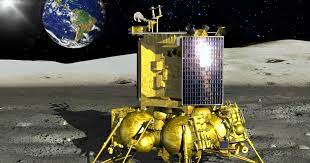
Chandrayaan-2 vs Chandrayaan-3: A Comparative Analysis: ISRO (Indian Space exploration Organisation) is preparing to launch Chandrayaan-3, its third lunar exploration mission, on July 14, 2023. This mission intends to correct the mistakes made by its predecessor, Chandrayaan-2, by performing a successful soft landing on the lunar surface as well as rover exploration. In this article, we will delve into the key differences between these two missions.
Daily Current Affairs Quiz: August 2023
Chandrayaan-2:
Chandrayaan-2 comprised an orbiter, a lander named Vikram, and a rover named Pragyan. The mission was designed with a success-based strategy in mind, with the goal of landing precisely within a 500mx500m rectangle. The Vikram lander featured five legs and a central thruster.
Chandrayaan-3:
Chandrayaan-3 is designed with a focus on failure-based strategies to enhance mission success. The mission includes a lander named Vikram and a rover named Pragyan, omitting the orbiter from the configuration. The landing zone has been increased, allowing the lander to land securely anywhere within a 4kmx2.4km rectangle. The Vikram lander now has more fuel to go longer distances to the landing spot or an alternate site if necessary. The lander’s landing site determination has been improved by integrating high-resolution images from Chandrayaan-2’s orbiter. Changes in the lander’s physical structure include removing the central thruster, strengthening the legs for higher velocity landings, and adding more solar panels for increased power generation.
Payloads and Scientific Instruments:
Chandrayaan-2:
Chandrayaan-2’s payloads included scientific instruments on the orbiter, lander, and rover. The orbiter was equipped with sensors for studying the Moon’s surface and exosphere, among other things. RAMBHA, ChaSTE, ILSA, and LP were among the lander payloads designed to measure various characteristics of the lunar environment. The Pragyan rover had Alpha Particle X-ray Spectrometer (APXS) and Laser Induced Breakdown Spectroscope (LIBS) for elemental analysis.
Chandrayaan-3:
The propulsion module of Chandrayaan-3 carries the SHAPE payload, designed to search for habitable planets through spectro-polarimetry. Lander payloads include RAMBHA (from NASA), ChaSTE, ILSA, and LP, similar to Chandrayaan-2, measuring seismicity, thermal properties, and more. Rover payloads remain consistent with APXS and LIBS for in-situ elemental composition analysis.
Implementation and Soft Landing:
Chandrayaan-2:
The Vikram lander attempted a soft landing on the lunar surface but faced a failure during descent due to a last-minute glitch. Because of the failed landing, Chandrayaan-2’s Pragyan rover could not be deployed.
Chandrayaan-3:
Chandrayaan-3 aims to achieve a successful soft landing with Vikram and deploy Pragyan rover to explore the lunar surface. The advances in landing site identification and design adjustments boost the odds of a successful landing.
Significance and International Context:
Chandrayaan-2’s setback highlighted the complexity and challenges of lunar exploration, inspiring a failure-based approach in Chandrayaan-3. If Chandrayaan-3 meets its mission objectives, India will become the fourth country after the United States, Russia, and China to conduct a successful soft landing on the Moon.





